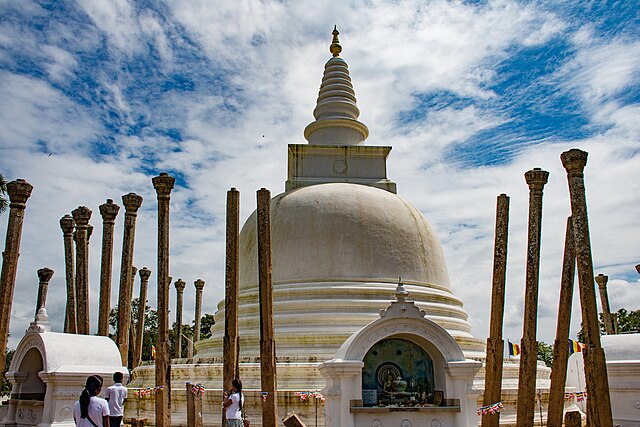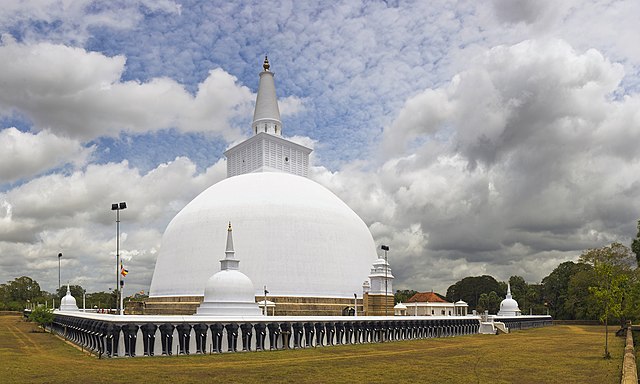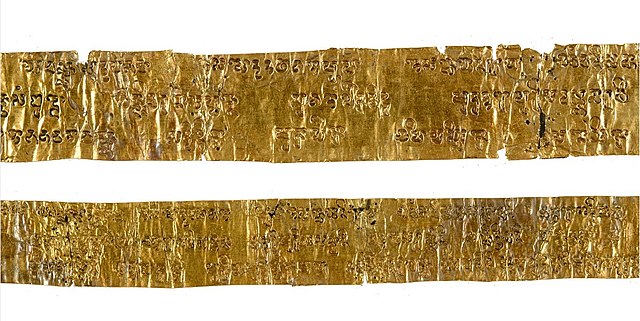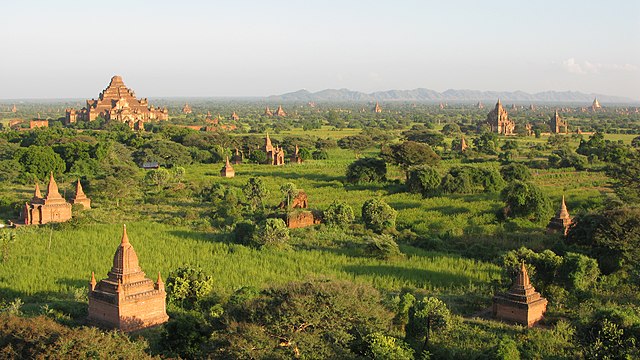Abhayagiri Vihāra was a major monastery site of Theravada, Mahayana and Vajrayana Buddhism that was situated in Anuradhapura, Sri Lanka. It is one of the most extensive ruins in the world and one of the most sacred Buddhist pilgrimage cities in the nation. Historically it was a great monastic center as well as a royal capital, with magnificent monasteries rising to many stories, roofed with gilt bronze or tiles of burnt clay glazed in brilliant colours. To the north of the city, encircled by great walls and containing elaborate bathing ponds, carved balustrades and moonstones, stood "Abhayagiri", one of seventeen such religious units in Anuradhapura and the largest of its five major viharas. One of the focal points of the complex is an ancient stupa, the Abhayagiri Dagaba. Surrounding the humped dagaba, Abhayagiri Vihara was a seat of the Northern Monastery, or Uttara Vihara and the original custodian of the Tooth relic in the island.

The restored Abhayagiri Dagaba (stupa) in Anuradhapura
Bronze statue of Avalokiteśvara Bodhisattva. Sri Lanka, ca. 750 CE
The Abhayagiri dagoba (stupa)
Detailing on the dagoba
Theravāda is the most commonly accepted name of Buddhism's oldest existing school. The school's adherents, termed Theravādins, have preserved their version of Gautama Buddha's teaching or Buddha Dhamma in the Pāli Canon for over two millennia.
The Thuparamaya Stupa, the earliest stupa after Theravada Buddhism became the official religion in Sri Lanka, dating back to the reign of King Devanampiya Tissa (247–207 BCE)
The Ruwanwelisaya stupa, built by the Sri Lankan King Dutugemunu (c. 140 BCE)
Gold Plates containing fragments of the Pali Tipitaka (5th century) found in Maunggan (a village near the city of Sriksetra)
Bagan, the capital of the Bagan Kingdom. Between the 11th and 13th centuries, more than 10,000 temples, pagodas and monasteries were constructed in the Bagan plains.








